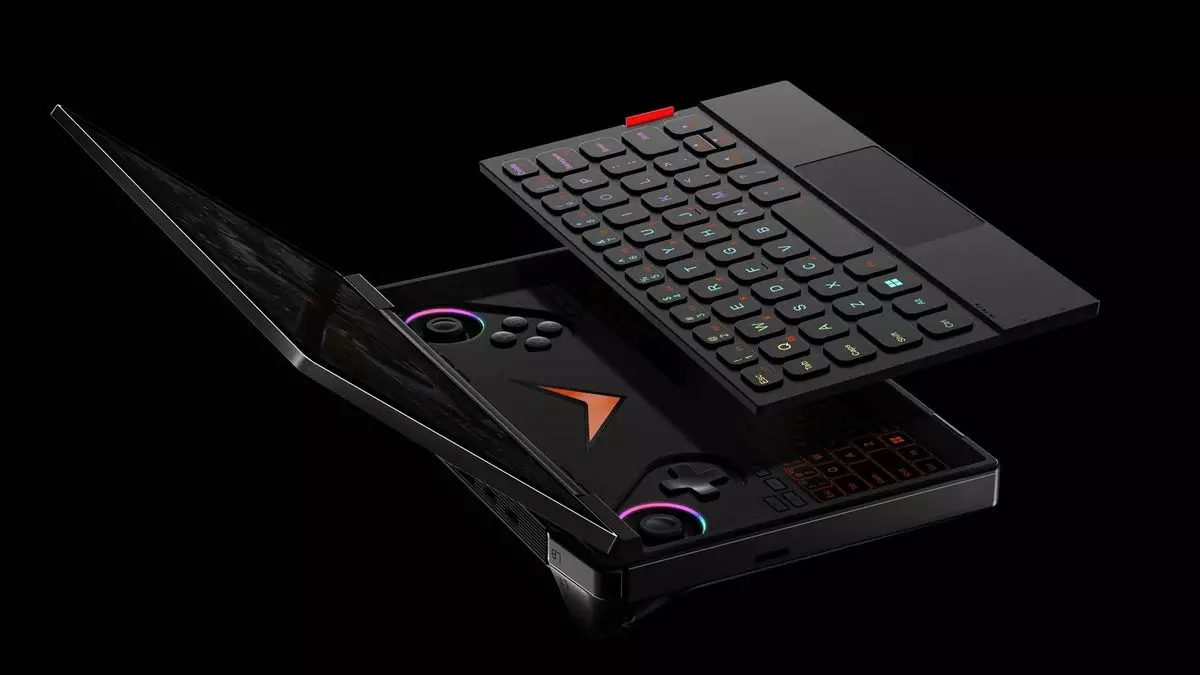As we look toward 2025, there’s a palpable excitement surrounding the emergence of handheld gaming PCs. Among the notable entrants into this arena is the OneXPlayer G1, a device that promises to elevate portable gaming with innovative features like a detachable keyboard. This wave marks the transition into the second generation of handheld technology, a space that has matured significantly, allowing manufacturers to push the boundaries of design and functionality.
This growing trend hints at a vibrant future for handheld gaming, where versatility and performance converge into a singular device that fits seamlessly into various user scenarios—from gaming on the go to more conventional computing tasks.
The design philosophy of the OneXPlayer G1 epitomizes the ideal of versatility. Unlike traditional handhelds, which often sacrifice some functionality for portability, the G1 equips itself with a removable keyboard. This unique feature allows users to navigate a range of environments without the cumbersome adjustments typically required for different devices. Operating the G1 in laptop, console, or tablet mode provides unprecedented flexibility for users who demand adaptability from their gadgets.
Visually, the device draws inspiration from familiar handheld models such as the GPD Win Max 2. Slightly smaller but yet compact enough to cater to the handheld market, the G1 enhances functionality through its specific design choices. For instance, underneath the detachable keyboard lies a controller layout complemented by a touch component—an innovative approach mirroring digital interface trends in gaming.
Equipped with the HX 370 processor found in the high-tier OneXFly F1 Pro, the G1 promises to deliver top-notch performance even at 1080p resolutions. Users can expect engaging graphics with improved frame rates, courtesy of cutting-edge technologies such as FSR 3 and frame generation. Such specifications suggest that the OneXPlayer G1 could rival traditional gaming consoles despite its handheld format, appealing to hardcore gamers and casual players alike.
The hardware advancements are crucial for fostering a competitive landscape within the portable gaming sphere. Companies engaging in this sector have started to showcase an understanding of what gamers seek: high performance, sleek designs, and multitasking capabilities. The G1 exemplifies this trend by bringing together all these elements into a singular device.
As companies like OneXPlayer innovate, they signal a broader shift within the portable gaming space, highlighting a willingness to explore unconventional designs. This experimentation isn’t happening in isolation; it’s part of a larger movement embodied by the likes of Acer’s Project DualPlay and the Ayaneo Flip DS, both of which showcase alternative gaming paradigms.
These various prototypes are paving the way for new form factors in handheld devices, suggesting that the future could offer an array of gaming experiences. Whether it’s through dual screens, detachable features, or hybrid functionality, the new generation of handheld gaming PCs is set for an evolution in design and utility that has yet to be fully realized.
While focusing too heavily on a specific model, such as the OneXPlayer G1, can lead to disappointment—particularly concerning price points and market availability—it’s essential to embrace the overall progress within this innovative realm. The surge of creativity among manufacturers indicates that the handheld gaming landscape is on the brink of transformation.
As anticipation builds in the lead-up to 2025, gamers should remain excited about the possibilities that technological advancements will introduce. The OneXPlayer G1 is just one player in a field ripe for exploration, offering a glimpse of a future where handheld gaming technology is not merely a novelty, but a formidable competitor to traditional gaming consoles. The horizon looks bright, with a charge toward a playful, powerful, and profound gaming experience that could change the way we view portable gaming.

